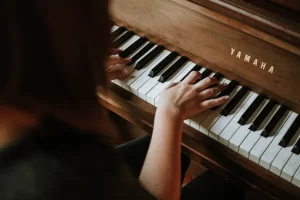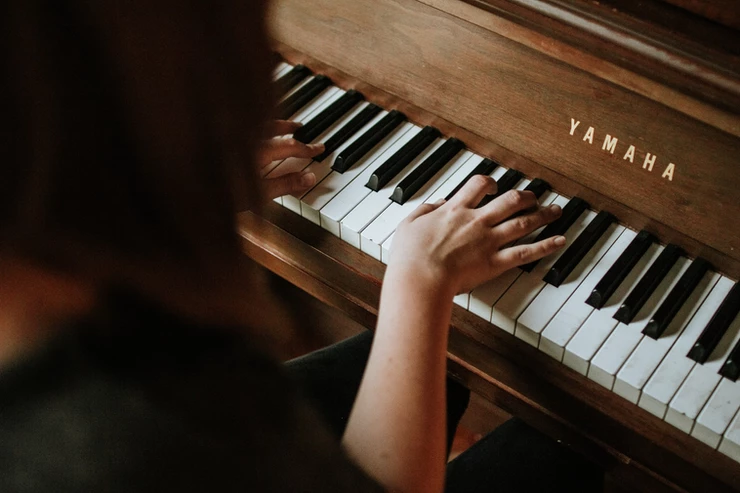Piano Lessons, Uncategorized
Six tips piano for beginners: at home

Six Piano Self-Learning Tips for Beginners
1. Get a Piano or Find a Keyboard
2. Set Up Your Goals
3. Find the Best Sources for Self-Learning Piano
● Lesson books with accompanying video material
● Piano video guides and tutorials
● Music theory literature
● Piano books for adult beginners
● Standardized online piano courses
● In-person or private online lessons
● Practicing with a band
● Software and music apps
One of the best tips for beginners to use: when learning the piano, don’t stick to one method only. A hybrid model of training has gained huge popularity because of combining the advantages of courses and tutoring with the benefits of technology, so surely worth trying!

4. Train Your Arms for the Correct Play
A key skill you should teach yourself at the very first steps is to maintain the proper position of your hands – the “C Position,” which refers to a cupped-shaped hand position. Consider playing five-finger patterns to improve your motoric and don’t forget about the black keys!
Right-hand position and finger motoric help to prevent repetitive stress injury, so make sure not to neglect it.
5. Familiarize Yourself with Sharps and Flats and Learn the Notes
Learning to play by ear is good but mostly fits the experimental learners that learn nothing more than just pressing the sharps and flats, and is completely ineffective for beginners.
So, if you’re far from the music notes, the only way to learn virtual piano or traditional keyboard play is to practice.
First of all, you need to get a solid understanding of notes and learn the Do-Re-Mi tune: Do, Re, Mi, Fa, So, La, Si.
The placement of notes C and F should be learned by heart at the beginning. Note C can be found by two black keys (there are a couple of Cs on the piano, always located eight notes apart), and right to their left is C. Note F is always found at the left of a trio of black keys.
Once you’ve learned the notes, their location, and how to read the music sheets, you can start playing your first music compositions! A great tool that can help you here is the music notation platform – the platform for creating, composing, playing, and printing the music sheets for your play.
6. Practice, Practice, Practice!
Whether you’ve decided to learn from online piano tutorials built with screen recording software, use traditional comprehensive music lesson books, or master the piano with a tutor – remember that the key to success is patience and consistency. For sure, it might take some time to get the progress on the first steps, but with regular practice, it’s more than possible to teach yourself piano even for adults.
So, keep on playing your favorite music, practice the pieces which should be improved, and always keep looking for the new, engaging practices for piano play!
Wrapping Up on Six tips piano for beginners: at home
As you can see, there are tons of different hacks and paths that can help you to effectively teach yourself piano. To master the power of music, start with choosing the right instrument and considering your learning goals, then go deeper into the learning methods, music theory, and practice – and you’ll surely see the results in the shortest periods!
We hope our methods have helped you to get a better understanding of how to master the piano at home and wish you good luck in this undertaking!

